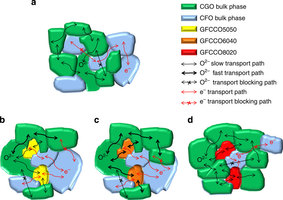The National Academies of Sciences, Engineering, and Medicine study committee on Chemical Engineering: Challenges and Opportunities in the 21st Century seeks input from the chemical engineering community on the current state and future of the field. The ideas collected will assist the committee members as they outline a vision for chemical engineering research, education, and industrial innovation over the next 30 years.

ECS member Shumin Fang was a contributor in a development that could dramatically improve the efficiency of batteries and fuel cells.
Image: Nature Communications
Sometimes the tiniest things could have the biggest impact—especially when it comes to battery technology.
New research from a collaborative team of engineers from Clemson University and the University of South Carolina developed a new material that could boost batteries’ power and help power plants.
ECS student member Shumin Fang of the University of South Carolina was a collaborator on the study. (Take a look at his paper on solid oxide fuel cells.)
The new material acts as a superhighway for ions, allowing for more powerful batteries and boosting the general efficiency of energy conversion.
Because batteries and fuel cells are limited by how fast ions can pass through the electrolyte, engineers must find a mix of electrolyte ingredients that allows for fast movement. This study proposes the answer to this in gadolinium doped ceria.


